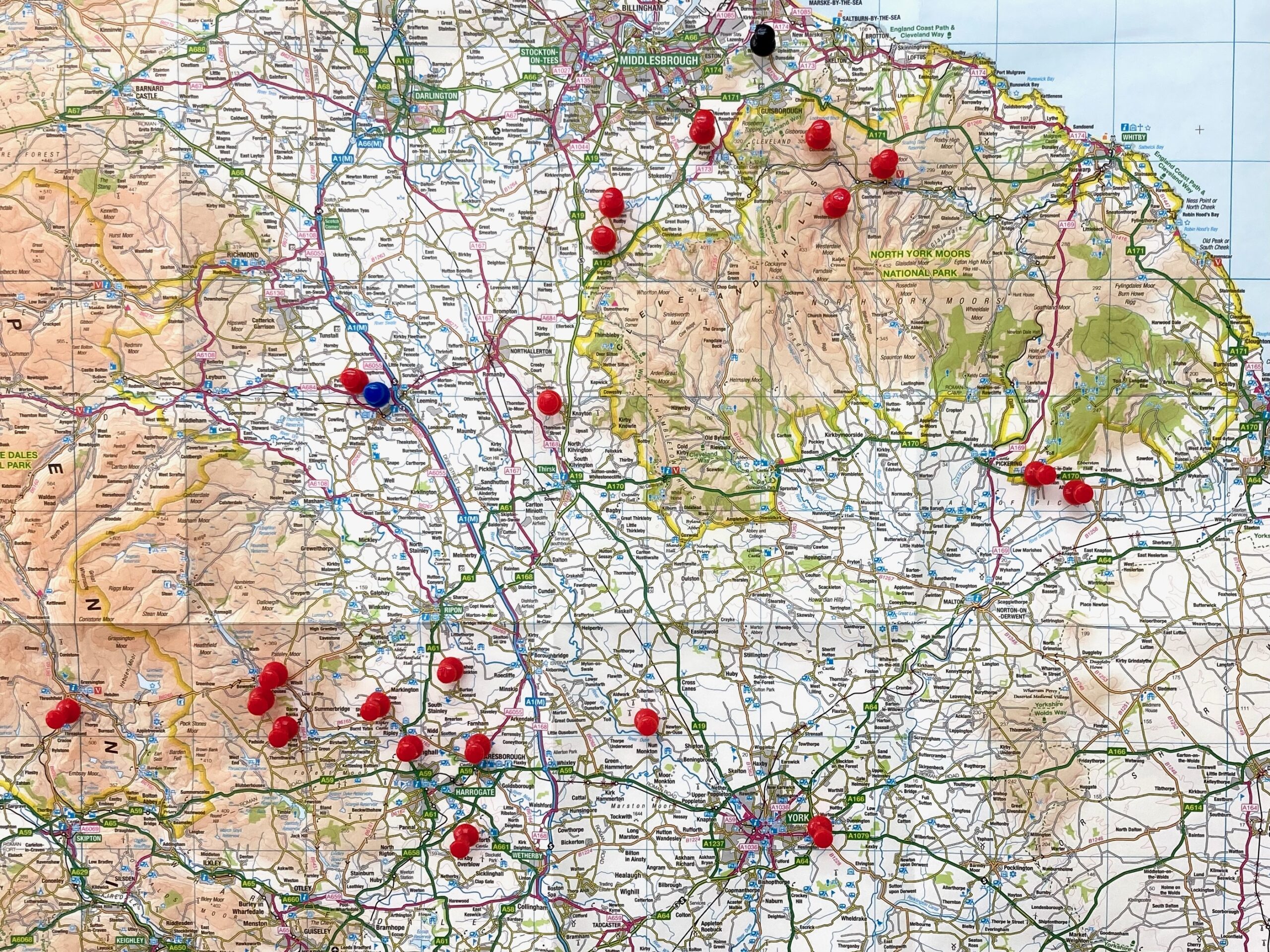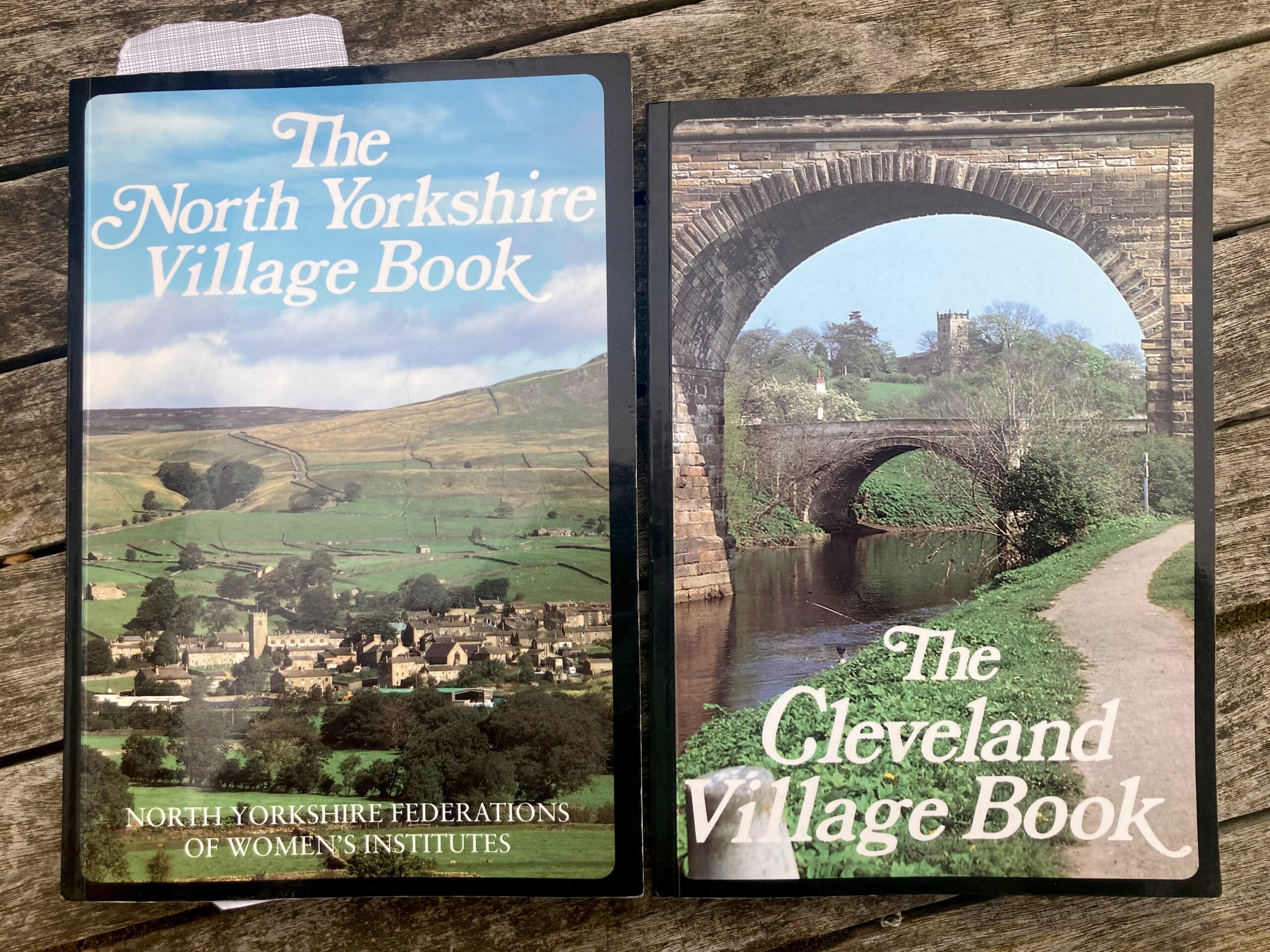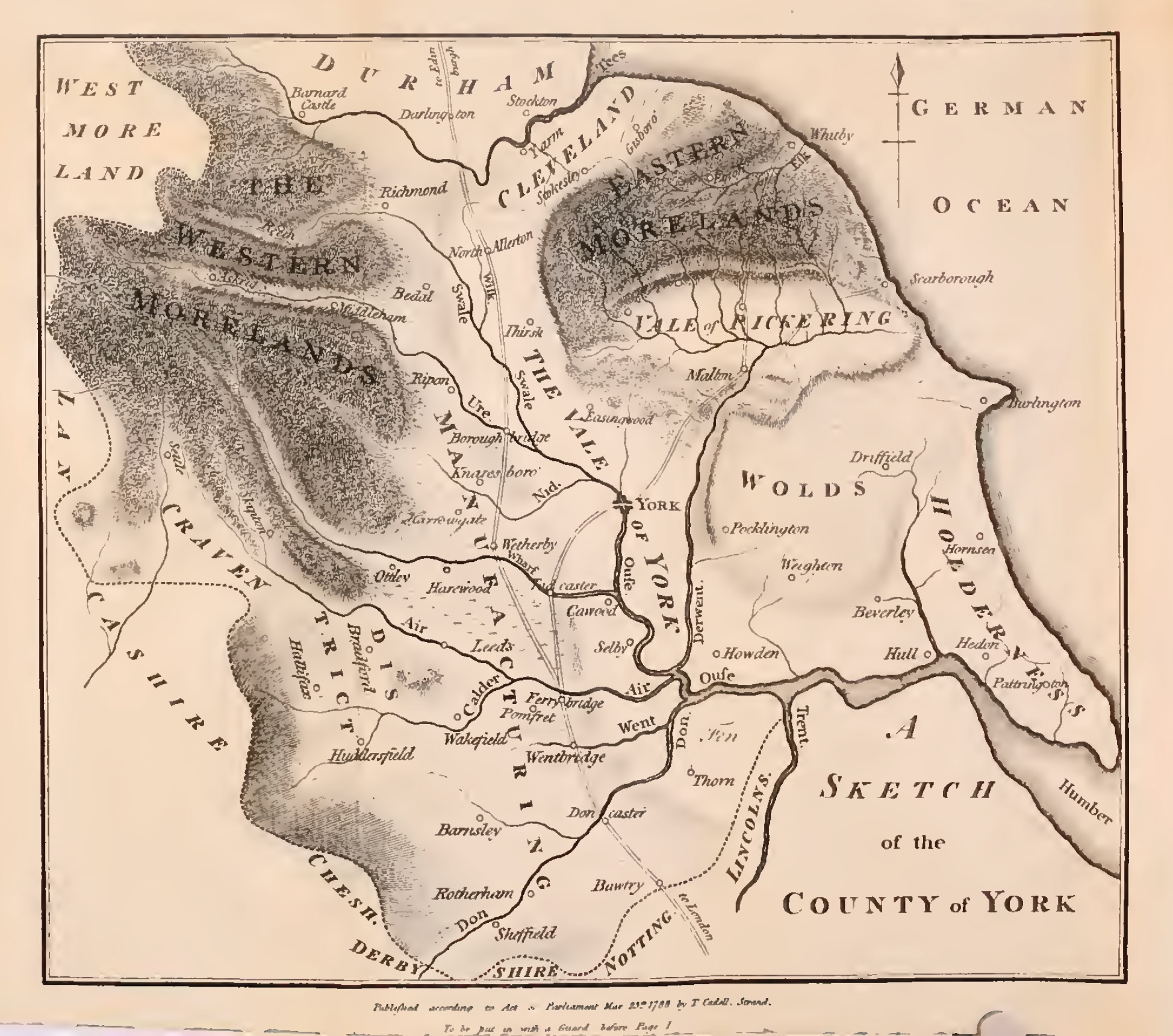(November 2022)
Concering the locations of Ralph Watson and Thomas Jackson, and the distribution of linen manufacture in North Yorkshire.
The first image above is a map of North Yorkshire pinned to my studio wall. The black pin at the top right, near the mouth of the River Tees, locates the tiny village of Wilton, home to the three generations of eighteenth century weavers called Thomas Jackson – father, son and grandson – authors of the manuscript known as the Weavers Thesis Book in the Cooper Hewitt Museum in New York.
The blue pin near the A1 Motorway locates the village of Aiskew, near Bedale, about 30 miles from Wilton and home of Ralph Watson, author of the book of linen designs now in the North Yorkshire County Records Office, c 1800.
The red pins begin to answer a question: Is it just a coincidence that two of the best historical sources about pre-industrial linen weaving in England originate from this part of North Yorkshire? Or was there a pattern of linen manufacture in the area?
To get a better understanding of the context for these weavers’ manuscripts I turned to a source of local knowledge: the Women’s Institute Village Books. The North Yorkshire Village Book, first published in 1991, was compiled from contributions from members of the North Yorkshire Federations of Women’s Institutes. It covers less than a third of villages, the narrative is quite selective and sources are not referenced. It may not be the most rigorous of historical sources, but it was somewhere to start.
Each red pin on the map above locates a village which, according to the book, has some historical association with the cultivation, processing, spinning and weaving of flax or hemp. Given that the book is far from exhaustive, the actual extent of the linen industry must have been larger. Nevertheless, the distribution of locations does suggests some interesting patterns. The map indicates a concentration of linen industry in the area around Knaresborough and Nidderdale at the south east of the upland area now known as the Yorkshire Dales, and a scattering of industry around the southern and north-eastern edges of the Yorkshire moors. It is interesting to compare my map with the map from 1788 included in William Marshall’s The Rural Economy of Yorkshire.
Since I did this pin-sticking exercise I have found some better sources of information. No one has written a comprehensive history of linen weaving in Yorkshire, or England, or the British Isles, but I recommend the following:
A History of Nidderdale by the Pately Bridge Tutorial Class, edited by Bernard Jennings. A model of rigorous historical study with some chapters dedicated to the evolution of the local linen and hemp industry which was particularly significant in the 18th and 19th centuries.
The East Anglian Linen Indutry: Rural Industry and Local Economy 1500-1850, by Nesta Evans (1985). The most comprehensive and detailed study of the history of linen weaving anywhere in Britain.
A History of the Lophams by Michael Friend Serpell (1980). With several chapters dedicated to the history of linen weaving in North & South Lopham, Norfolk, up to 1925.
The Linen Industry of Shropshire, Hilary Green (1981), (article), in Industrial Archaelogy Review, Volume V, Number 2, Spring 1981.


